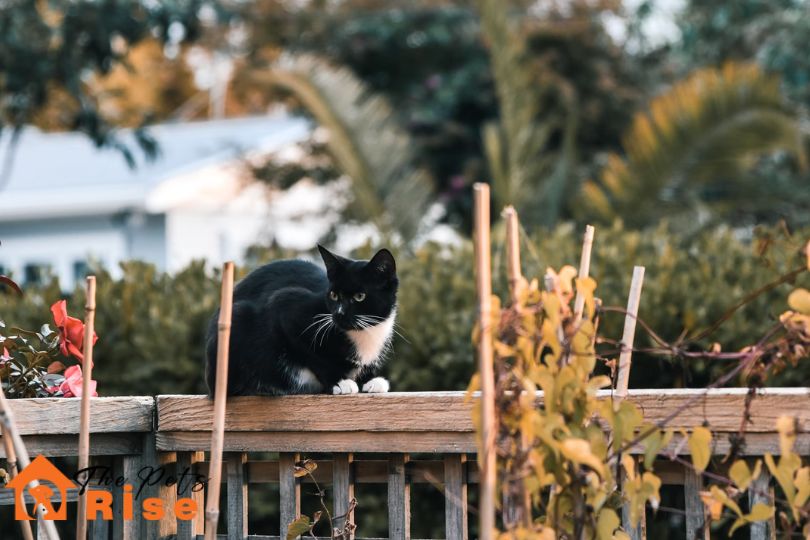Losing a cat can be a heartbreaking and stressful experience. Cats sometimes wander too far from home and get lost. You can find a lost outdoor cat by searching the neighborhood areas.
Approximately 15% of cat owners experience the loss of their pet within five years, as per a survey by the American Society for the Prevention of Cruelty to Animals (ASPCA). The study also revealed that a thorough physical search increases the chances of finding a missing cat.
The distance at which missing cats are discovered from their homes depends on their personalities. Notably, indoor cats tend to travel shorter distances compared to outdoor cats.
If you have a cat that goes outdoors, you may be worried about what to do if they don’t return. Don’t panic; there are some steps you can take to increase your chances of finding your lost outdoor cat. This article will share tips on finding a lost outdoor cat and reuniting with your furry friend.
-
Search Neighborhood Areas
The first thing you should do when you notice that your outdoor cat is missing is to search your neighborhood areas. Your cat may be hiding nearby or taken in by a neighbor who thought they were a stray. There’s a good chance you will find your outdoor cat inside someone else’s home if it has a curious personality.
Start by calling your cat’s name and shaking their favorite treats or toys. You can also use a flashlight to look under cars, bushes, porches, and other hiding places. Be patient and persistent, as your cat may be scared or injured and not respond immediately. Don’t forget to check roofs and trees while searching the neighborhood areas.
-
Distribute Lost Cat Flyers
Another effective way to find a lost outdoor cat is to distribute lost cat flyers around your neighborhood. You can make your flyers or use online templates. Your flyers should include a clear and recent photo of your cat, their name, description, and any distinctive features.
Also, include your contact information and a reward if possible. You can post your flyers on bulletin boards, lampposts, mailboxes, and other visible places. Additionally, hand them out to your neighbors, local businesses, and delivery people.
-
Check Every Hiding Places
Sometimes, cats can get trapped or stuck in places that are hard to find. They may also be too afraid or injured to leave their hiding places. Therefore, you should search every hiding place, such as garages, sheds, basements, crawl spaces, dumpsters, and storm drains.
Furthermore, you can ask your neighbors to check their properties for any signs of your cat. Don’t forget to check construction sites, parking lots, and alleys. You may need a ladder, a flashlight, or a camera to access some of these places. Be careful; you don’t want to injure yourself or your cat.
-
Contact Animal Rescue And Shelters
A vital step to finding a lost outdoor cat is to contact your local animal rescue and shelters. There is a high possibility that your cat may have been picked up by an animal control officer and taken to a shelter. So, you should call or visit every shelter in your area and provide them with your cat’s information and photo.
In addition, you should check their websites and social media pages for any updates or photos of found cats. You should do this as soon as possible, as some shelters have a limited holding period for stray animals.
-
Post A Listing On Newspaper Classifieds
You can also use the power of the media to find a lost outdoor cat. You can post a listing on your local newspaper classifieds online or in print. Also, use radio or TV stations with lost and found segments.
Your listing should include the same information as your flyers, such as your cat’s photo, name, description, and contact details. Moreover, mention the date and location where your cat was last seen. You may have to pay a fee for some of these services. But it may be worth it if it helps you find your outdoor cat.
-
Report Lost Pet To Online Sites
One of the most effective methods for locating your missing cats is to utilize lost and found pet websites. These platforms and various apps are specifically designed to assist individuals in reuniting with their lost pets. Creating a profile for your lost cat on these websites allows you to upload a picture and provide all relevant information.
Furthermore, you can look around the listings of found cats to determine if any match your own. Additionally, you can receive alerts and notifications from these websites and apps if someone reports seeing or finding your cat.
-
Utilize Social Media Platforms
Social media platforms are a powerful way to find a lost outdoor cat. You can utilize platforms like Facebook, Twitter, Instagram, and TikTok to share your cat’s information and photos with your friends, followers, and relevant groups.
Additionally, participating in and posting on groups and pages dedicated to lost and found pets can be helpful. Utilizing hashtags such as #lostcat, #missingcat, and #findmycat can help expand your reach to a larger audience. You can also encourage your friends and followers to share your post and help you spread the word about your lost outdoor cat.
Summary
Finding a lost outdoor cat can be challenging and emotional, but don’t give up hope. There are many resources and strategies that you can use to increase your chances of finding your cat and bringing them home safely.
Remember to act quickly, search thoroughly, and communicate widely. Your cat may be closer than you think and waiting for you to find it.







